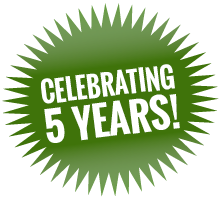Read by Matilda Longbottom

It was 1996 when I committed an unforgivable act.
The year before, we had purchased 35 acres of mostly wooded, steeply sloped land bordered by a river on two sides. On one of the few flat acres, there was an old house – part log, covered in Permastone and in desperate need of renovation. While we worked on it, we slept in a tent in the yard.
My dream had always been to have a large herb garden. I envisioned marjoram here, oregano there, and rosemary everywhere. As I became familiar with the land and learned about herbs and spices, I planted all the old standbys: basil, parsley, chives, thyme, and sage. I also added some less common herbs: savory, tarragon, and even borage. But it was the fennel that caused all the trouble.
This particular fennel plant grew to about five feet in height. I wasn’t interested in harvesting the bulb; I wanted the seeds, prized for their licorice flavor and minty zing. Fennel seeds are a culinary delight and have medicinal value, not the least of which is to reduce flatulence! They are also reputed to improve eyesight, as heralded in Longfellow’s 1842 poem “The Goblet of Life”:
“Above the lower plants it towers,
The Fennel with its yellow flowers;
And in an earlier age than ours
Was gifted with the wondrous powers
Lost vision to restore.”
I loved running my hands through the feathery fronds, releasing their heavenly scent. It was the tallest and fullest of all my herbs. Was it any wonder that ancient warriors drank fennel tea for courage, or that Prometheus used a fennel stalk to steal fire from the gods?
Up until the Middle Ages, fennel was believed to deter evil spirits. So, how could such evil have overtaken me? Had the spirits jumped from the fennel into me? Had sleeping in a tent while gutting and rebuilding a house and working a full-time job robbed me of my senses?
I have spent the subsequent 24 years riddled with guilt and doing penance. True confession: that fateful day, I approached the fennel plant to inhale its aromatic goodness. Something looked different. As I got closer, I saw that some of the stalks and fronds had grown thicker. But it wasn’t the plant getting stouter; it was bright, lime-green caterpillars. Dozens of them, happily munching away on my fennel!
I plucked off one. The anise-like licorice scent filled the air. I pulled off another. My heart started beating harder; my breath quickened. Panic set in. They were killing my fennel! What if they finished the fennel and then went for the basil? The oregano? The rosemary??!
Frantically, I gathered a grocery bag and pulled the caterpillars off the fennel, counting each one as I dropped it into the bag. Twenty, twenty-five, thirty, thirty-five! Thirty-five plump, aromatic fennel killers went into that plastic bag. Nostrils flared with anger and indignation, I marched down the slope to the river and flung the bag into the water, watching it float downstream before sinking.
Fennel saved. Or so I thought.
As I strove to become a better steward of the land, the enormity of what I had done slowly dawned on me. I had hard-heartedly murdered 35 spicebush swallowtail caterpillars (not to mention polluting the river with a plastic bag). I had spat in Mother Nature’s face out of pure ignorance.
For years, I continued to grow fennel, hoping the swallowtails would lay their eggs and the caterpillars would eat the fennel, easing my guilt. But no. Eventually, the fennel plants got smaller and smaller each year until they didn’t come back, just like the caterpillars.
Over the years, I labored to make my yard a sanctuary for insects and other critters, including myself. I had a debt to repay the Earth. I grew everything organically and shared with whatever wandered through, except deer, which I discouraged with hanging pie pans, human hair, urine, and other old farmer deterrents. I expanded the garden and planted milkweed for the monarchs. The neighbor’s honey bees worked the holy basil and sweet anise. My Facebook account features photos of plants and bugs as I celebrate Mother Nature.
This year, I finally started some fennel plants from seed again – the first time in many years. The plants didn’t get very big, but maybe next year, they’ll grow larger and produce seeds for me to harvest and dry.
It’s October, and the season is winding down. Spring and Summer crops are harvested and stored, and Fall crops are in the ground. While bringing in some Southern peas to dry and store for Winter, I caught a glimpse of something bright green moving on the concrete step to the house. It was a small spicebush swallowtail caterpillar, no bigger than half the length of my pinky finger. This time, I didn’t pluck it up in anger and haste. Instead, I gently placed it on a fallen leaf and carried it to the garden, where I carefully laid it on one of the fennel plants.
Perhaps I have served my penance and been forgiven. ❖
About the Author: Kris Landrum is a passionate gardener and dedicated steward of the land. Residing in southwestern Virginia, Kris has spent decades cultivating a harmonious relationship with nature on her 35-acre property. Her garden, once a site of ecological missteps, is now a thriving sanctuary for insects and wildlife. Kris shares her gardening journey and love for the natural world through her writing and photography, inspiring others to embrace organic and sustainable gardening practices.


 Previous
Previous

